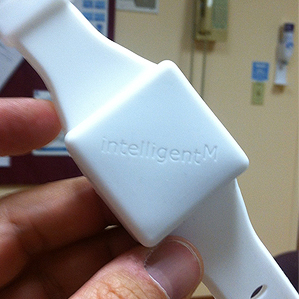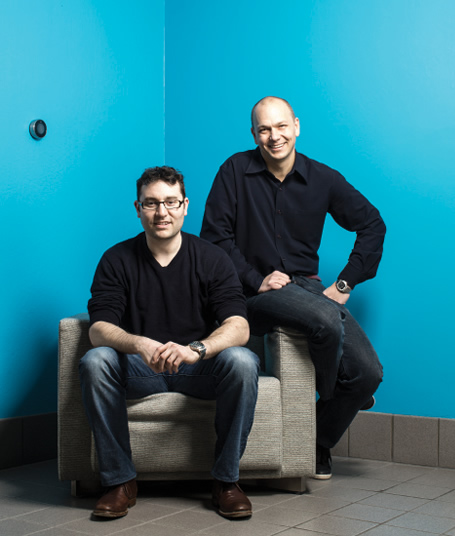關於Cookie:你必須知道的事
羅超為紐約時報中文網撰稿 2013年03月26日
在今年的中央電視台315晚會中,
對用戶網絡隱私權的侵犯行為成為被曝光的對象之一,央視通過調查曝光了易傳媒、上海傳漾、悠易互通、品友互動等多家網絡廣告公司利用瀏覽器cookie數
據跟蹤用戶的行為,同樣被點名的還有門戶網站網易。央視指出,上述公司在刻意收集用戶瀏覽網站時留下的cookie數據,並在用戶不知情的情況下擅自調用
這些cookie以達到盈利目的。
一時間“cookie”這個平時只有技術人員才關注的名詞,引起了多方關注。它看上去離我們很遠,其實很近:只要上網,就要接觸cookie。上網 時,你電腦的IP、點擊行為、輸入網站的信息等,如果網站認為有需要,便會將這些信息寫到你電腦的一個文件夾裡面。此後當你每次訪問該網站時,相關的 cookie記錄便會自動回傳到網站。網站也可以更改或清除你電腦上已經被記錄的cookie。用手機瀏覽器上網時,也會使用到cookie。
信息時代,人們享受互聯網便利的同時,也在把自己更多地暴露在別人的注意力之下。越來越多的人都在接觸cookie技術,因此有關cookie的話
題才會引起如此關注。根據中國互聯網絡信息中心(China Internet Network Information
Center,簡稱CNNIC)最新發佈的《第31次中國互聯網絡發展狀況統計報告》,截至2012年底,我國網民共有5.64億,互聯網普及率佔到人口
總數的42.1%。而隨着移動互聯網的發展,這個趨勢將延續。另據CNNIC的數據,截至去年底,我國手機網民的規模為4.2億,網民中使用手機上網的用
戶佔比由上年底的69.3%提升至74.5%。
相對於互聯網的飛速發展,與之相關的隱私保護法律和行業規定顯得滯後。關於cookie,到底誰能操作、能否公開、用戶對cookie的控制權和知 情權等問題,國內的法律法規和行業約定幾乎是空白,而歐美已有相關的立法和案例。如2012年5月,歐盟法律做出明確規定,如果用cookie追蹤用戶的 使用習慣,網站必須取得使用者的“明確同意”。
那麼cookie究竟是啥?這個名為“小甜餅”的技術,最初是程序之間交流的一種數據包,在互聯網上是一種基於瀏覽器和網站的技術,主要目的是為了 讓網站記錄用戶的一些信息,以便用戶下次訪問網站時能認出他。 Cookie的出現最初是為了解決實際問題:為了網站開發人員能方便地“記住”用戶,可在用戶每次訪問時提供更方便、更有針對性的功能。就像《賤人就是矯 情》那篇科技博客里說的那樣,不會讓大老爺們看到彈力貼身衛生棉的廣告。
《打造Facebook》的作者王淮認為,cookie就是一種工具。不應該打壓這種工具本身,而是應該打壓利用這種工具的惡意行為。知名互聯網觀 察家、5G諮詢合伙人洪波也認為,從Facebook、谷歌來看,互聯網的發展正是以犧牲所謂的隱私來換取個性化和精準化的體驗,在不對用戶造成困擾的情 況下,用戶應看輕隱私問題,提升隱私容忍度。博客中國創始人方興東也指出,媒體對cookie的片面化、簡單化、妖魔化的報道,引起用戶無謂的恐慌,不利 於認清與解決問題。Cookie的有效合理使用,是互聯網的優勢所在,也是互聯網的價值,不能把cookie問題簡單化絕對化,應該防止濫用,而不是不 用。
它確實帶來了便利。自動登錄是怎麼實現的呢?當用戶第一次選擇自動登陸時,網站會在cookie里存儲一個隨機碼;下次訪問時網站會將瀏覽器上傳 cookie的隨機碼和服務器數據庫中保存的隨機碼進行比對,如果吻合則直接登錄。同時網站的“在本機上記住我”、“一個月內不再輸入”等提示、用戶設定 為自動填充的賬號和密碼;還有視頻網站在用戶退出情況下保存的觀看歷史、購物網站在用戶退出登陸情況下仍保留的購物車;網站的註冊頁面可以看到的輸入框的 下拉提示;手機訪問百度時,下拉框的歷史記錄所有這些功能都利用了cookie技術。
Cookie技術設計本身其實充分考慮了安全性,儘管當時對此並沒有任何規定。比如A網站存儲的cookie,只有A網站才可以讀取;另外 cookie也是有“保質期”的,網站可以在任何一次訪問時清理掉用戶設備上的cookie。同時cookie被限制在4k的容量內,這意味着所能存儲的 信息非常有限;cookie傳遞過程支持加密數據傳送等。
然而由於與操作系統、瀏覽器、網站和網絡這四個因素密切相關,這使cookie存在很多敞口風險。事實上通過網站的服務器端代碼、瀏覽器、網站在瀏 覽器上的腳本都可以抓取到cookie,第三方cookie查看軟件、桌面軟件如記事本、黑客使用的抓包工具通這些途徑也能看到cookie。因此這四個 因素中任何一個環節存在漏洞都可能導致cookie的不安全。
Cookie能存什麼信息是由網站決定的。如果網站願意,可以將用戶的賬號、密碼等任何文字信息存儲到cookie。因此如果網站存在缺陷,比如將 密碼直接明文存到cookie,或者允許第三方代碼訪問自己用戶的cookie,並且對第三方代碼不加以審核控制,都可能出現安全問題,更不用說如果網站 直接將擁有的cookie數據售賣。正常的網站,不但自己不會濫用cookie,還會處處考慮用戶在上網環境、操作系統、瀏覽器、網絡環境等潛在的異常情 況,並防患未然,做好相關設計以避免cookie被泄露,比如做加密傳送、有效期設置、提醒等。
2011年,國外研究人員發現IE瀏覽器存在名為cookiejacking的安全漏洞,容易導致網絡帳號和密碼泄露,最新版IE已修復該問題。像支付寶這樣對安全性要求極高的網站,則直接開發了一個瀏覽器控件,也可以實現記住用戶賬號的目的。
Cookie和網站安全性設計的前提都是:瀏覽器是安全的,是不會偷窺用戶私密數據的。如果瀏覽器存在漏洞,就可能給黑客可乘之機,獲取cookie文件。另外瀏覽器主觀偽造、利用用戶cookie,在技術上也是可行的。
由於cookie對操作系統開放, 所以第三方軟件甚至記事本也可以查看到電腦上的cookie內容。如果操作系統有漏洞或者Office軟件有漏洞等,都可能導致cookie不安全。比如密碼,雖然用“*”型代替了,但通過“星號密碼查看器”這種小軟件就可以輕鬆破解。
Cookie的另一重風險,則是隨意接入未知的Wi-Fi網絡。雖然幾率很小,但如果遇到隱藏的釣魚Wi-Fi,黑客們也會守株待兔,等着藉此抓取 用戶數據包,也包括cookie。2012年瀋陽警方和上海警方證實了釣魚Wi-Fi存在。一旦聯入,黑客在15分鐘之內就可以竊取上網用戶的個人信息和 密碼,包括網銀密碼、炒股賬號密碼等。黑客的作案場所基本在提供免費上網的地方。當然還有人為因素,如果你身邊的人使用你的電腦,有心且懂技術,更可直接 通過第三方軟件查看和分析電腦上的cookie數據。
如果真的像315晚會說的那樣,對cookie所有者而言又有什麼危害?舉個例子,如果打印文件被泄露了會有什麼後果?這要看你打印的具體內容是什 麼,以及泄露給誰了。同樣是打印文件,如果內容是商業機密,並泄露給了競爭對手,那麼後果就很嚴重了。雖然是小概率事件,但隱私和安全問題一樣,一旦發生 後果卻很嚴重。我們可以把cookie想像成是通過瀏覽器“打印”的文件。Cookie泄露會有什麼後果,關鍵在於被人看到了什麼、以及誰看到了。 然而從隱私的角度出發,或許很少有人願意不經允許地被窺視、被分析。
理論上來說,地域、性別等信息的私密程度較低;瀏覽歷史、用戶名等信息稍微敏感;如果涉及到密碼、姓名等信息則極度私密了。如果是廣告公司做精確營 銷,問題不是那麼嚴重,因為他們只知道有這麼個人,更確切說有“這麼一台電腦”,很難知道這個人究竟是誰。這如同“七成網民曾瀏覽過色情網站”和“張同學 經常瀏覽成人網站”的區別。但如果是調查公司拿到這些數據,問題就不一樣了:他們可能通過cookie找到具體個人,商業偵探也可能通過cookie的關 聯提取出來很多商業信息。
作為無法脫離互聯網的普通人,我們如何與cookie和平共處?首先使用在業界知名度高,值得信任的網站;並且不同網站要使用不同的賬號和密碼。不要提交私密信息給不信任的網站,包括姓名、身份證號、住址、公司、銀行賬號信息等。
鑒於瀏覽器是cookie的基礎,因此使用一款安全的瀏覽器非常重要,慎重使用不知名的瀏覽器。瀏覽器是否安全有哪些指標呢?除了不會亂收集數據,還應具有設置安全、隱私、防追蹤等的能力。
如果不是技術專家,最好不要“裸奔”,一定要裝安全軟件,包括可靠的殺毒軟件和安全管理軟件,同時建議使用正版操作系統和正版軟件,並及時給操作系統打補丁,減少漏洞。這樣就可以確保cookie不會在操作系統層面被泄露。
如果對安全要求高,還要定期清理cookie或者使用一些特殊設置。360、QQ電腦管家等軟件清理瀏覽器cookie。實際上IE瀏覽器可以設置 為不使用cookie,不過操作比較複雜。但包括QQ瀏覽器等都有隱私瀏覽功能或者“退出時清理”這類設置,不會使用和記錄cookie。
如果315晚會對cookie的關注,能引起人們對互聯網安全和隱私的重視,則必將促進整個互聯網行業的發展。這將促使下一個版本的瀏覽器、安全軟件可以為用戶提供更有效的保護,需求永遠是第一推動力。
一時間“cookie”這個平時只有技術人員才關注的名詞,引起了多方關注。它看上去離我們很遠,其實很近:只要上網,就要接觸cookie。上網 時,你電腦的IP、點擊行為、輸入網站的信息等,如果網站認為有需要,便會將這些信息寫到你電腦的一個文件夾裡面。此後當你每次訪問該網站時,相關的 cookie記錄便會自動回傳到網站。網站也可以更改或清除你電腦上已經被記錄的cookie。用手機瀏覽器上網時,也會使用到cookie。
相對於互聯網的飛速發展,與之相關的隱私保護法律和行業規定顯得滯後。關於cookie,到底誰能操作、能否公開、用戶對cookie的控制權和知 情權等問題,國內的法律法規和行業約定幾乎是空白,而歐美已有相關的立法和案例。如2012年5月,歐盟法律做出明確規定,如果用cookie追蹤用戶的 使用習慣,網站必須取得使用者的“明確同意”。
那麼cookie究竟是啥?這個名為“小甜餅”的技術,最初是程序之間交流的一種數據包,在互聯網上是一種基於瀏覽器和網站的技術,主要目的是為了 讓網站記錄用戶的一些信息,以便用戶下次訪問網站時能認出他。 Cookie的出現最初是為了解決實際問題:為了網站開發人員能方便地“記住”用戶,可在用戶每次訪問時提供更方便、更有針對性的功能。就像《賤人就是矯 情》那篇科技博客里說的那樣,不會讓大老爺們看到彈力貼身衛生棉的廣告。
《打造Facebook》的作者王淮認為,cookie就是一種工具。不應該打壓這種工具本身,而是應該打壓利用這種工具的惡意行為。知名互聯網觀 察家、5G諮詢合伙人洪波也認為,從Facebook、谷歌來看,互聯網的發展正是以犧牲所謂的隱私來換取個性化和精準化的體驗,在不對用戶造成困擾的情 況下,用戶應看輕隱私問題,提升隱私容忍度。博客中國創始人方興東也指出,媒體對cookie的片面化、簡單化、妖魔化的報道,引起用戶無謂的恐慌,不利 於認清與解決問題。Cookie的有效合理使用,是互聯網的優勢所在,也是互聯網的價值,不能把cookie問題簡單化絕對化,應該防止濫用,而不是不 用。
它確實帶來了便利。自動登錄是怎麼實現的呢?當用戶第一次選擇自動登陸時,網站會在cookie里存儲一個隨機碼;下次訪問時網站會將瀏覽器上傳 cookie的隨機碼和服務器數據庫中保存的隨機碼進行比對,如果吻合則直接登錄。同時網站的“在本機上記住我”、“一個月內不再輸入”等提示、用戶設定 為自動填充的賬號和密碼;還有視頻網站在用戶退出情況下保存的觀看歷史、購物網站在用戶退出登陸情況下仍保留的購物車;網站的註冊頁面可以看到的輸入框的 下拉提示;手機訪問百度時,下拉框的歷史記錄所有這些功能都利用了cookie技術。
Cookie技術設計本身其實充分考慮了安全性,儘管當時對此並沒有任何規定。比如A網站存儲的cookie,只有A網站才可以讀取;另外 cookie也是有“保質期”的,網站可以在任何一次訪問時清理掉用戶設備上的cookie。同時cookie被限制在4k的容量內,這意味着所能存儲的 信息非常有限;cookie傳遞過程支持加密數據傳送等。
然而由於與操作系統、瀏覽器、網站和網絡這四個因素密切相關,這使cookie存在很多敞口風險。事實上通過網站的服務器端代碼、瀏覽器、網站在瀏 覽器上的腳本都可以抓取到cookie,第三方cookie查看軟件、桌面軟件如記事本、黑客使用的抓包工具通這些途徑也能看到cookie。因此這四個 因素中任何一個環節存在漏洞都可能導致cookie的不安全。
Cookie能存什麼信息是由網站決定的。如果網站願意,可以將用戶的賬號、密碼等任何文字信息存儲到cookie。因此如果網站存在缺陷,比如將 密碼直接明文存到cookie,或者允許第三方代碼訪問自己用戶的cookie,並且對第三方代碼不加以審核控制,都可能出現安全問題,更不用說如果網站 直接將擁有的cookie數據售賣。正常的網站,不但自己不會濫用cookie,還會處處考慮用戶在上網環境、操作系統、瀏覽器、網絡環境等潛在的異常情 況,並防患未然,做好相關設計以避免cookie被泄露,比如做加密傳送、有效期設置、提醒等。
2011年,國外研究人員發現IE瀏覽器存在名為cookiejacking的安全漏洞,容易導致網絡帳號和密碼泄露,最新版IE已修復該問題。像支付寶這樣對安全性要求極高的網站,則直接開發了一個瀏覽器控件,也可以實現記住用戶賬號的目的。
Cookie和網站安全性設計的前提都是:瀏覽器是安全的,是不會偷窺用戶私密數據的。如果瀏覽器存在漏洞,就可能給黑客可乘之機,獲取cookie文件。另外瀏覽器主觀偽造、利用用戶cookie,在技術上也是可行的。
由於cookie對操作系統開放, 所以第三方軟件甚至記事本也可以查看到電腦上的cookie內容。如果操作系統有漏洞或者Office軟件有漏洞等,都可能導致cookie不安全。比如密碼,雖然用“*”型代替了,但通過“星號密碼查看器”這種小軟件就可以輕鬆破解。
Cookie的另一重風險,則是隨意接入未知的Wi-Fi網絡。雖然幾率很小,但如果遇到隱藏的釣魚Wi-Fi,黑客們也會守株待兔,等着藉此抓取 用戶數據包,也包括cookie。2012年瀋陽警方和上海警方證實了釣魚Wi-Fi存在。一旦聯入,黑客在15分鐘之內就可以竊取上網用戶的個人信息和 密碼,包括網銀密碼、炒股賬號密碼等。黑客的作案場所基本在提供免費上網的地方。當然還有人為因素,如果你身邊的人使用你的電腦,有心且懂技術,更可直接 通過第三方軟件查看和分析電腦上的cookie數據。
如果真的像315晚會說的那樣,對cookie所有者而言又有什麼危害?舉個例子,如果打印文件被泄露了會有什麼後果?這要看你打印的具體內容是什 麼,以及泄露給誰了。同樣是打印文件,如果內容是商業機密,並泄露給了競爭對手,那麼後果就很嚴重了。雖然是小概率事件,但隱私和安全問題一樣,一旦發生 後果卻很嚴重。我們可以把cookie想像成是通過瀏覽器“打印”的文件。Cookie泄露會有什麼後果,關鍵在於被人看到了什麼、以及誰看到了。 然而從隱私的角度出發,或許很少有人願意不經允許地被窺視、被分析。
理論上來說,地域、性別等信息的私密程度較低;瀏覽歷史、用戶名等信息稍微敏感;如果涉及到密碼、姓名等信息則極度私密了。如果是廣告公司做精確營 銷,問題不是那麼嚴重,因為他們只知道有這麼個人,更確切說有“這麼一台電腦”,很難知道這個人究竟是誰。這如同“七成網民曾瀏覽過色情網站”和“張同學 經常瀏覽成人網站”的區別。但如果是調查公司拿到這些數據,問題就不一樣了:他們可能通過cookie找到具體個人,商業偵探也可能通過cookie的關 聯提取出來很多商業信息。
作為無法脫離互聯網的普通人,我們如何與cookie和平共處?首先使用在業界知名度高,值得信任的網站;並且不同網站要使用不同的賬號和密碼。不要提交私密信息給不信任的網站,包括姓名、身份證號、住址、公司、銀行賬號信息等。
鑒於瀏覽器是cookie的基礎,因此使用一款安全的瀏覽器非常重要,慎重使用不知名的瀏覽器。瀏覽器是否安全有哪些指標呢?除了不會亂收集數據,還應具有設置安全、隱私、防追蹤等的能力。
如果不是技術專家,最好不要“裸奔”,一定要裝安全軟件,包括可靠的殺毒軟件和安全管理軟件,同時建議使用正版操作系統和正版軟件,並及時給操作系統打補丁,減少漏洞。這樣就可以確保cookie不會在操作系統層面被泄露。
如果對安全要求高,還要定期清理cookie或者使用一些特殊設置。360、QQ電腦管家等軟件清理瀏覽器cookie。實際上IE瀏覽器可以設置 為不使用cookie,不過操作比較複雜。但包括QQ瀏覽器等都有隱私瀏覽功能或者“退出時清理”這類設置,不會使用和記錄cookie。
如果315晚會對cookie的關注,能引起人們對互聯網安全和隱私的重視,則必將促進整個互聯網行業的發展。這將促使下一個版本的瀏覽器、安全軟件可以為用戶提供更有效的保護,需求永遠是第一推動力。







 Hygiene helper: This prototype of an IntelligentM wristband can tell hospitals how long a worker spends washing up.
Hygiene helper: This prototype of an IntelligentM wristband can tell hospitals how long a worker spends washing up. 
